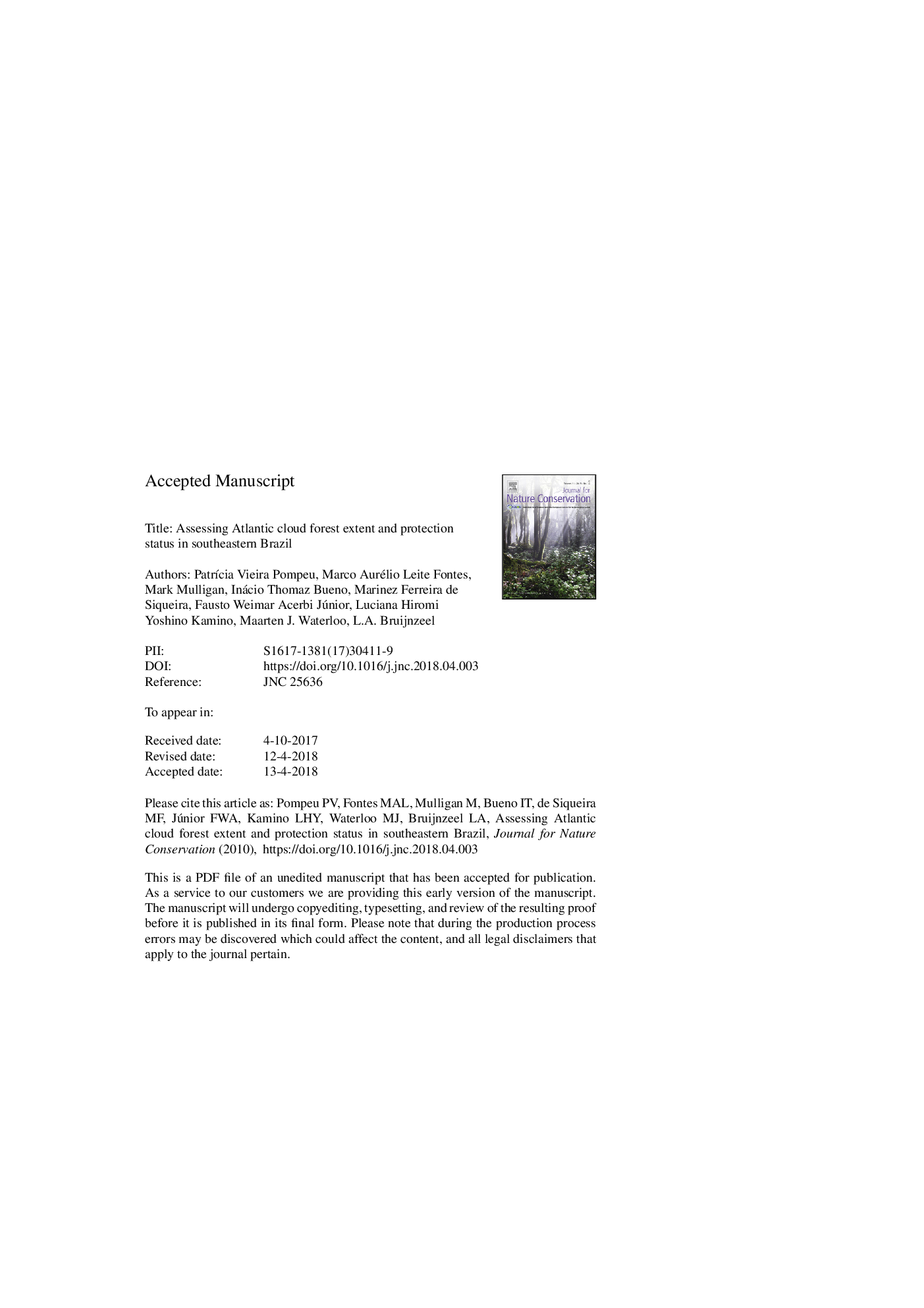| Article ID | Journal | Published Year | Pages | File Type |
|---|---|---|---|---|
| 8849275 | Journal for Nature Conservation | 2018 | 26 Pages |
Abstract
This study aims to map the spatial distribution of Atlantic cloud forest and assess its protection status in the Serra da Mantiqueira, southeastern Brazil, using a combination of predictive distribution modelling and remote sensing techniques. The potential distribution of cloud forests in the Serra da Mantiqueira was predicted using a combination of three algorithms for different environmental variables, including climatic, hydrometeorological, a topographic variable and a fog-related variable. After estimating the potential cloud forest distribution, remote sensing mapping techniques were used to approximate actual cloud forest area. Four land-use classes were distinguished: cloud forest, plantation forest, a 'high-altitude complex', and 'other covers'. Actual mapped cloud forest areas were compared with locations of existing protected areas to assess the status of regional cloud forest protection. Predicted cloud forest distribution was excellent, with conditions above 1500â¯m.a.s.l. generally the most suitable for cloud forest occurrence. Actual cloud forest occurrence mapped with remote sensing imagery was 52% of the predicted potential area with differences likely due to past forest loss and the presence of non-forest ('high-altitude complex') vegetation. Much of the mapped cloud forest area is under nominal protection, with most areas falling into the 'Protected Area with Sustainable Use of Natural Resources' category. The combined use of predictive distribution modelling and remotely sensed observations successfully mapped cloud forest extent in the study area. The results reinforce the need to assign high conservation priority to the Serra da Mantiqueira as a whole and to create a core area with full protection status.
Related Topics
Physical Sciences and Engineering
Earth and Planetary Sciences
Earth and Planetary Sciences (General)
Authors
PatrÃcia Vieira Pompeu, Marco Aurélio Leite Fontes, Mark Mulligan, Inácio Thomaz Bueno, Marinez Ferreira de Siqueira, Fausto Weimar Acerbi Júnior, Luciana Hiromi Yoshino Kamino, Maarten J. Waterloo, L.A. Bruijnzeel,
